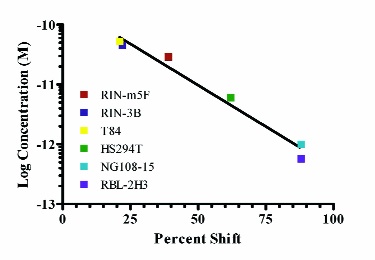CTB-SAP (Cat. #IT-14) is a conjugate between the cell-binding component of cholera toxin (the B chain) and saporin. CTB binds to GM1 (monosialotetrahexosylganglioside), which is present on the surface of different neurons. It has been suggested to be involved in many problems (besides the most famous in the gut: cholera) of neuronal systems: Parkinson’s, motor neuron degeneration, spinal cord injury, and Alzheimer’s disease among others.
As seen in the figure, the cytotoxicity is dependent on the quantity of GM1 on the cell surface, from little effect at zero expression to pM ED50 at high expression. The use of this conjugate has recently been the subject of several studies, and is providing use to researchers in many fields.

